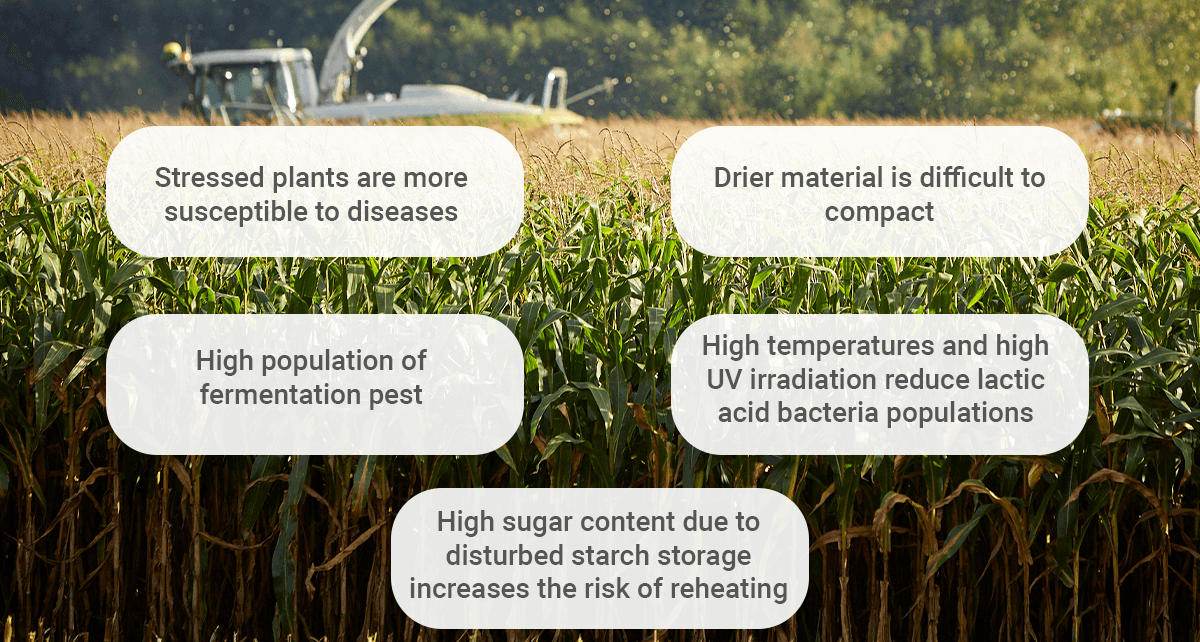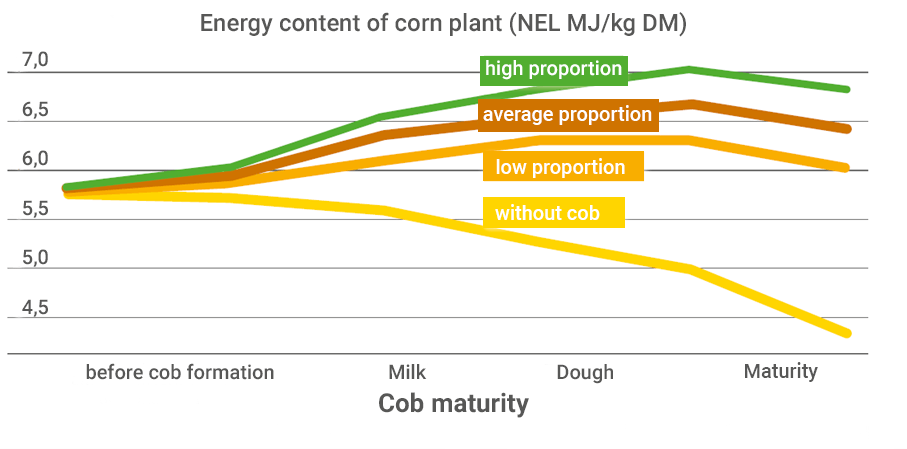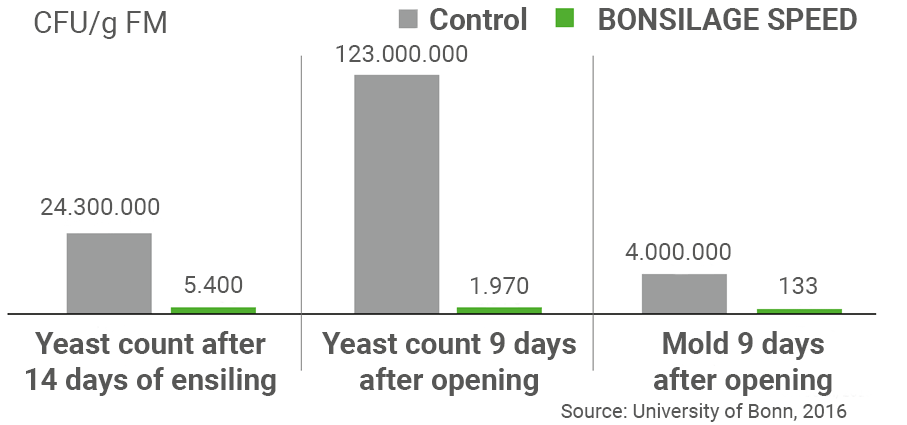High feed intake in ruminant feeding can only be achieved with hygienic forages. Drought damage in corn is becoming more and more common due to frequent summer droughts. In addition to best practices of silage and harvest management, the use of silage additives has become standard practice.
Corn plants use water efficiently and grow in regions with little rainfall. Nevertheless, during the period from tasseling to maturity, corn needs sufficient water to ensure the basis for optimal cob and kernel formation. If drought damage and the associated effects (Figure 1) occur in this phase, it will be important to have a correctly timed harvest and to use a research proven silage inoculant to ensure proper fermentation. Silage additives inhibit the growth of unwanted microorgansims (e.g yeasts and molds) and improve the feed value.

Figure 1. Special hazards in dry-damaged corn
Safe ensiling with BONSILAGE SPEED
BONSILAGE gives advices for the correct harvest time of dry-damaged corn stocks in two critical stages of development.
First Stage: Drought stress during corn tasseling
The consequence of drought stress during corn tasseling is a low-cob population. The plant continues to dry/mature without the formation of cobs. The low-cob corn is very rich in sugar, as the sugar in the leaves does not pass into the grain. Due to the increased sugar content and the often-increased fungal populations on dead leaves, the risk of reheating increases after opening the corn pile. This promotes the growth of yeasts and molds. Thus, the feed value of corn silage is lower (Figure 2). We highly recommend the use of our silage additive BONSILAGE SPEED for these types of situations.
Increasing acetic acid formation
Acetic acid will be produced within the first two weeks of ensiling. It inhibits the development and multiplication of yeasts and molds in the pile (Figure 3). A special combination of homo- and heterofermentative lactic acid bacteria strains (LAB) ensures intensive fermentation right from the start. With the exclusively selected LAB strain of Lactobacillus diolivorans, significantly increased acetic acid concentrations are already available after two weeks. Consequences such as reduced feed intake, aerobic spoilage processes, reheating and secondary fermentation are prevented. The cob-free corn plants should be harvested with a dry matter content of at least 28 %. As a result, the risk of silage effluent formation in the pile is relatively low and fermentation losses are minimized.

Figure 2. Development of Net Energy Content for Lactation depending on the proportion of cob to the whole corn plant (Source: Saxon State Office for the Environment, Agriculture and Geology; Prof. Dr. Olaf Steinhoefel)
Second stage:
Drought stress after blossom
Drought stress in corn often occurs after blossom. A rapid ripening in the corn stalks is the result. The dry-damaged leaves stop assimilation. Affected stalks should be harvested with a maximum dry matter content of 32 % (drying of the long cob leave). Therefore, stalks should be closely monitored on a daily basis. Additionally, the use of BONSILAGE SPEED is recommended to increase the feed supply despite damaged raw material and to improve the forage situation. Especially with these pre-damaged corn stalks, compliance with silage management recommendations is very important.
Your BONSILAGE consultant will be happy to advise you on the use of BONSILAGE SPEED in dry-damaged corn stocks.

Figure 3. BONSILAGE SPEED – Active inhibition of fermentation pests before and after silo opening

 Deutschland
Deutschland USA
USA Brasil
Brasil Español
Español